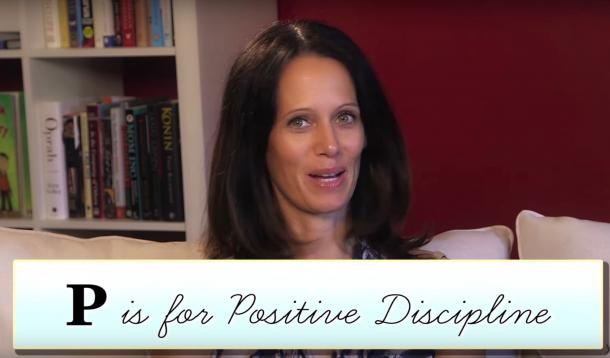
Hi, it’s Andrea Nair—thank you for staying tuned to the A to Z of Taming Tantrums series! We’re up to the letter P already, and P is for Positive Discipline.
One of the most common questions I receive from parents is: How do I discipline my child? I don’t want to spank, use threats, or time-outs so what can I do?
I, too, experienced first hand what it feels like to feel unequipped to handle the challenges toddlers bring (which I why I shifted my career from trauma psychotherapy to parenting education!), as I didn’t feel like I had a plan to address the typical things toddlers do: dawdle, get lost in play, hit, launch toys and forks at me, bite, melt-down, blow-up, and throw themselves onto the ground while screaming.
The first thing I did when my children were toddlers was try to get a better understanding of their brains, and that’s where I discovered much of what significantly changed my own parenting, and how I coach others. I discovered that where the instructions land in a child’s mind would really change how he or she responds: whether there is some thought or a big physical reaction.
What I mean by that is this: if our instructions trigger the child’s fight-or-flight reaction, we can expect defiance, to be ignored, miscommunication, or aggression. That natural instinct to defend or attack is very well developed in little ones, as that is what starts off keeping them safe: they yell or flail around to get their needs met. If our instructions cause our child to pause and respond with cooperation, our words were likely processed in the prefrontal cortex part of the mind. The more our words get received by that front part of the mind, the more cooperation we get!
As babies become toddlers, and toddlers become preschoolers, it is our challenging parenting task to teach our little ones how to shift from that knee-jerk physical reaction when they are upset or have an unmet need to one that is less aggressive and gentler. Our little ones are full of the sweetest empathy and love on Earth, but that gets hijacked when they are full of “angry bubbles.”
Using positive discipline will help our young children make that transition from defending, anger, and attacking to thinking rationally when they are upset or have an unmet need. Please know that it takes time to teach our children (and some adults!) to use their “thinking brain” rather than their “freaking out brain,” so expect LOTS of repetition. You will feel like a broken record: that’s normal. Know that each time you redirect with positive words, a little link in the thoughtful responding chain has been created.
Please watch this video below, where I explain this in more detail:
It’s the difference between taking away a toy, threatening them with time-outs (time-outs often make things worse because abandonment can get triggered, but mostly because little children just don’t have the brain power to understand what time-outs are for: they just get scared and mad), shouting “no” or “don’t” and trying something like this:
“Couches are for sitting. Jump over here or outside if that’s what you want to do,” (instead of “No jumping! Stop it!”)
“Clean hands are eating,” (instead of “Did you wash your hands? Make sure you use soap!”… nag, nag…)
“Are we going up for bed like elephants or crabs?!” (instead of, “I saaaaaid let’s go – it’s bedtime. If you don’t stop playing right now, I’m taking that toy away.”)
“Everyone with shoes on is going to the park,” (instead of, “I have told you ten times to put your shoes on! You’re not listening to me! Get over here.”)
This doesn’t mean that we become parenting doormats, but that we parent with love, boundaries, and positive words. I actually created an app to remember phrases that really help with all kinds of tricky toddler parenting situations. I invite you to check it out by searching for “Taming Tantrums” in your smartphone app store. Here are the links for the Canadian & American iTunes stores and also the Android app store.
I also wrote more about what positive discipline means in this post, and a full-length eBook called Taming Tantrums: A Connect Four Parenting Approach to Raising Cooperative Toddlers. Hopefully between the app, my articles, and the book, you’ll get the information you need. Oh, and please do pop over to my Facebook page if you have any questions and to read more about positive parenting.
We're so excited to share with you the A to Z of Taming Tantrums video series!
Each week we'll share the next letter of the alphabet and Andrea will discuss how it relates to reducing tantrums - and improve our experience as parents! You can view each video here as they are added each Friday.
